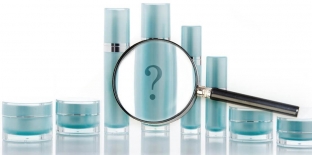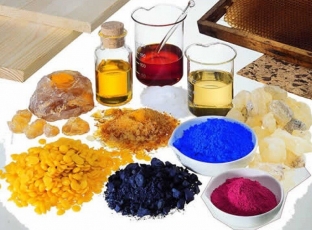The shelves of supermarkets, specialized stores and even pharmacies today are full of a huge variety of cosmetics. For skin care of the face, body and even the intimate area, for women, men and even children, for various age categories – almost every modern person uses cosmetics today.
But in order for the purchase to be correct and have the desired effect, it is important to learn how to correctly read labels and analyze composition of cosmetics. Today estet-portal.com will teach you how to do it right.
Composition of cosmetics: analysis of ingredients
Cosmetic products for skin care were used by our distant ancestors, and if initially they were exclusively natural home remedies, over time their mass production was launched in different countries of the world.
Printing the composition of cosmetics on labels began only in 1973, by decision of the FDA (US Food and Drug Administration) – US Food and Drug Administration.
At the same time, the first dictionary of cosmetic ingredients was released, which included only 5 thousand terms. It was the beginning of the printing of the composition of cosmetics on labels that gave rise to competition between their manufacturers, as a result of which they began to invent more and more new ingredients. Launched in 2006, the 11th edition of the International Nomenclature of Cosmetic Ingredients already had over 13,000 ingredients!
Ingredients of cosmetics:
- 10 rules for competent reading of the composition of cosmetics;
- banned and undesirable substances in cosmetics.
10 Rules for Properly Reading the Ingredients of Cosmetics
In order to learn how to read the composition of cosmetics correctly, you need to remember only 10 simple rules. By reviewing the label of a cosmetic product in the manner outlined in these guidelines, you will be able to determine if the product is right for you and if using it will help you achieve the desired effect.
10 rules for the analysis of the composition of cosmetics:
- In the composition of cosmetic products, the ingredient with the highest percentage of content is prescribed first. Usually water is written first on the label: if the product is made in the USA – this is water, if in Europe – aqua.
- All other ingredients on the label are listed in descending order of their percentage.
- Ingredients whose concentration is above 1% are listed first, then – those whose content is less than 1%.
- If the product is produced in Europe and contains substances related to dyes – they will appear at the end of the ingredients list and be accompanied by designations indicating their color indexes (CI - color index) or hair dye numbers (HD – hair dye numbers). In cosmetics made in the USA, colors are labeled FD&C (food, drug and cosmetic) or D&C when the color is banned from food use.
- The manufacturer has the right not to list a certain ingredient in a cosmetic product if it is contained in an amount of less than 0.01% for rinse-off and 0.001% for leave-in products, or if this is due to a "trade secret". In the second case, it is necessary to prove the uniqueness of the ingredient and obtain permission not to indicate the secret ingredient in the composition of the cosmetic product, but only to write the postscript "and other ingredients" at the end of the list.
- The rules for spelling cosmetic ingredients are designed to make chemical names easier to read. According to this principle, natural ingredients of animal, vegetable and mineral origin are called, for example, "beeswax".

- The names of herbal ingredients in cosmetics are created according to the following scheme: the botanical name of the plant and, sometimes, the common name in brackets, then – the name of the part of the plant from which the raw material is obtained, and the method of its processing. For example: Glycyrrhiza Glabra (Licorice) root extract.
- For decorative cosmetics that are available as a series of tones, all the colors used in the series may be listed on the label of each of the cosmetics. In such a case, the phrase "may contain" is used. or sign “+/-“.
- If the cosmetic contains alcohol – it is necessary to indicate its nature (technical, synthetic or from food raw materials), as well as whether it is denatured or not.
- A substance or combination of substances that is added to a finished product to disguise an unpleasant odor or impart a fragrance is referred to as a fragrance (fragrance) by the INCI rules, even if many ingredients were used to obtain it (usually more than twenty). According to the rules of European countries, the fragrance is indicated as parfum.

Prohibited and unwanted substances in cosmetics
For prohibited substances in cosmetics, there is no single international list. Such lists are created separately by the government of each country, and if in the USA, for example, only 11 ingredients are banned, in European countries there are about 400 of them! But the European list even includes those ingredients that are unlikely to be used, such as deadly poisonous compounds or radioactive materials.
There are a number of ingredients in cosmetics that can be called "undesirable" due to their negative effects.
For example, mineral oils, which are products of petroleum distillation and have a comedogenic effect, can clog pores. It is also undesirable to include parabens in cosmetics, which are preservatives in cosmetics.
The most harmful preservatives – these are formaldehyde releasing substances called Diazolidinyl Urea, Imidazolidinyl Urea, DMDM Hydantoin.
Thus, in order to choose the optimally effective and safe cosmetic product, it is necessary to correctly analyze its composition. Estet-portal.com thanks you for your attention! Leave your feedback about this article in the comments.






Add a comment